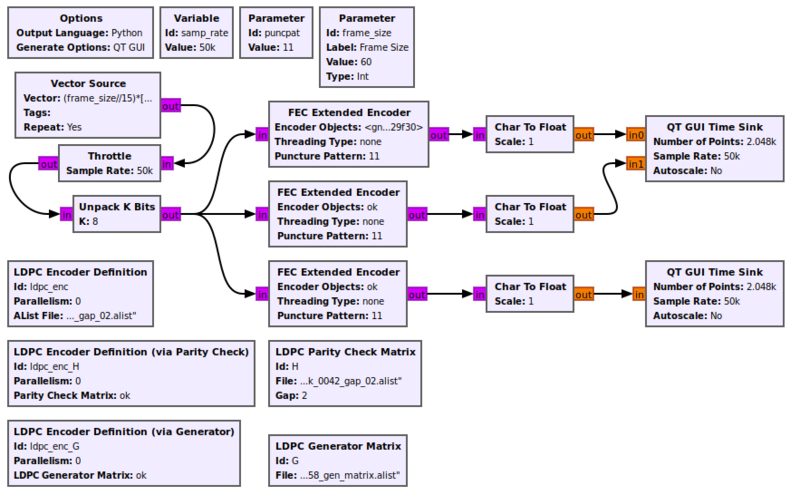LDPC Encoder Definition: Difference between revisions
Jump to navigation
Jump to search
No edit summary |
|||
| Line 3: | Line 3: | ||
== Parameters == | == Parameters == | ||
; Id | |||
: The id of the block | |||
; Parallelism | ; Parallelism | ||
: For parallel execution of multiple instances of the block (more info is needed on this) | : For parallel execution of multiple instances of the block (more info is needed on this). It has 3 options: 0, 1, 2. If the option of 1 or 2 is chosen, respective number of new inputs appear for dimensions. | ||
; Dimension 1 | ; Dimension 1 | ||
: | : This input appears when parallelism is set to 1 or 2. | ||
; Dimension 2 | ; Dimension 2 | ||
: | : This input appears when parallelism is set to 2. | ||
; File | ; File | ||
: | : Path of the file to use. | ||
== Example Flowgraph == | == Example Flowgraph == | ||
Latest revision as of 10:34, 6 June 2022
This block can be used to create an LDPC Encoder object that can then be used in other encoders such as FEC Extended Encoder.
Parameters
- Id
- The id of the block
- Parallelism
- For parallel execution of multiple instances of the block (more info is needed on this). It has 3 options: 0, 1, 2. If the option of 1 or 2 is chosen, respective number of new inputs appear for dimensions.
- Dimension 1
- This input appears when parallelism is set to 1 or 2.
- Dimension 2
- This input appears when parallelism is set to 2.
- File
- Path of the file to use.
Example Flowgraph
This flowgraph can be found at [1]
Source Files
- C++ files
- ldpc_encoder_impl.cc
- Header files
- ldpc_encoder_impl.h
- Public header files
- ldpc_encoder.h
- Block definition
- ldpc_encoder_def_list.block.yml
